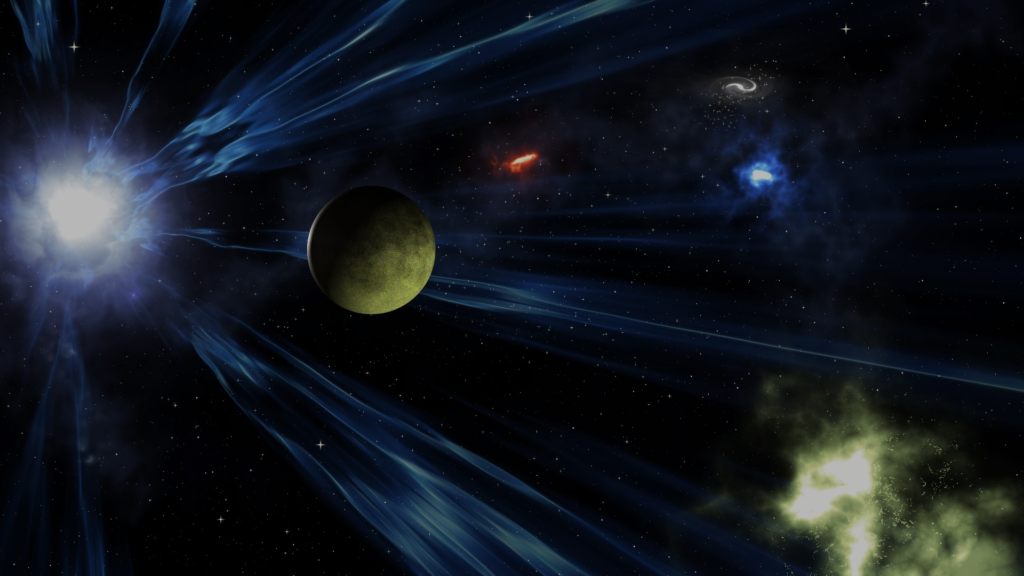## A Journey Through the Milky Way Galaxy: Its Structure and Wonders
Ever looked up at the night sky and felt a sense of awe, a tiny speck contemplating the vastness above? That feeling is perfectly understandable, because we’re all inhabitants of something truly magnificent: the Milky Way Galaxy. This swirling city of stars, gas, and dust is our cosmic home, and it’s far more intricate and fascinating than you might imagine. Let’s embark on a journey to explore its structure and wonders!
### 1. The Spiral Arms of Our Galactic City
Imagine a giant, spinning pinwheel – that’s a pretty good analogy for the Milky Way. We’re not a perfect spiral, more of a barred spiral galaxy, meaning we have a central bar-shaped structure of stars, from which spiral arms extend. These arms aren’t rigid structures like spokes on a wheel; they’re more like density waves – regions where stars are more densely packed. These waves move through the galaxy, triggering star formation as they pass. Think of them as traffic jams in a galactic highway, where stars bunch up and new ones are “born.” Our solar system resides in a relatively quiet part of one of these arms, the Orion Arm, located between the Sagittarius and Perseus arms.
### 2. The Galactic Bulge and the Supermassive Black Hole
At the heart of the Milky Way lies a dense region called the galactic bulge. This is a spheroidal structure packed with older stars, obscuring our view from Earth. Nestled within this bulge is Sagittarius A*, a supermassive black hole – a region of spacetime with such intense gravity that nothing, not even light, can escape. It’s millions of times more massive than our Sun and plays a crucial role in the galaxy’s dynamics, influencing the orbits of surrounding stars. While terrifying in concept, this black hole isn’t actively devouring everything around it; it’s more of a quiet, but powerful, gravitational anchor.
### 3. The Halo: A Ghostly Surroundings
Surrounding the spiral arms and bulge is a vast, spherical halo. This region contains older stars, globular clusters (dense groups of hundreds of thousands of stars), and a significant amount of dark matter – a mysterious substance we can’t directly observe but know exists because of its gravitational effects. These globular clusters are like ancient fossils of the Milky Way, offering clues to the galaxy’s formation billions of years ago. Imagine the halo as a diffuse, ghostly aura surrounding the bright, vibrant spiral city.
### 4. The Galactic Neighborhood: Dwarfs and Interactions
The Milky Way isn’t isolated; it’s part of a larger group called the Local Group, which includes other galaxies, some large and some much smaller, called dwarf galaxies. These dwarf galaxies are often gravitationally bound to the Milky Way and are slowly being absorbed by our galaxy. The ongoing interaction with these smaller galaxies subtly shapes the structure and evolution of our own. The Canis Major Dwarf Galaxy is an example of a dwarf galaxy currently interacting with the Milky Way, subtly altering its structure.
### 5. Exploring Our Cosmic Home: Ongoing Research
Scientists constantly use various telescopes, both ground-based and space-based, to study the Milky Way. The upcoming Square Kilometre Array (SKA) telescope, for example, promises to provide unprecedented detail about the structure and composition of our galaxy, unveiling new secrets about its formation and evolution. New discoveries are constantly being made, adding to our understanding of this awe-inspiring cosmic home.
**In Conclusion:**
The Milky Way Galaxy is a breathtakingly beautiful and complex system. From its swirling spiral arms to its central supermassive black hole and its mysterious halo, it presents a fascinating canvas for astronomical research. We’ve only scratched the surface in this exploration, but hopefully, it’s ignited your curiosity about our place in the universe. What aspects of the Milky Way intrigue you the most? Share your thoughts in the comments below, and don’t hesitate to explore further resources to deepen your knowledge of this magnificent galactic city!


